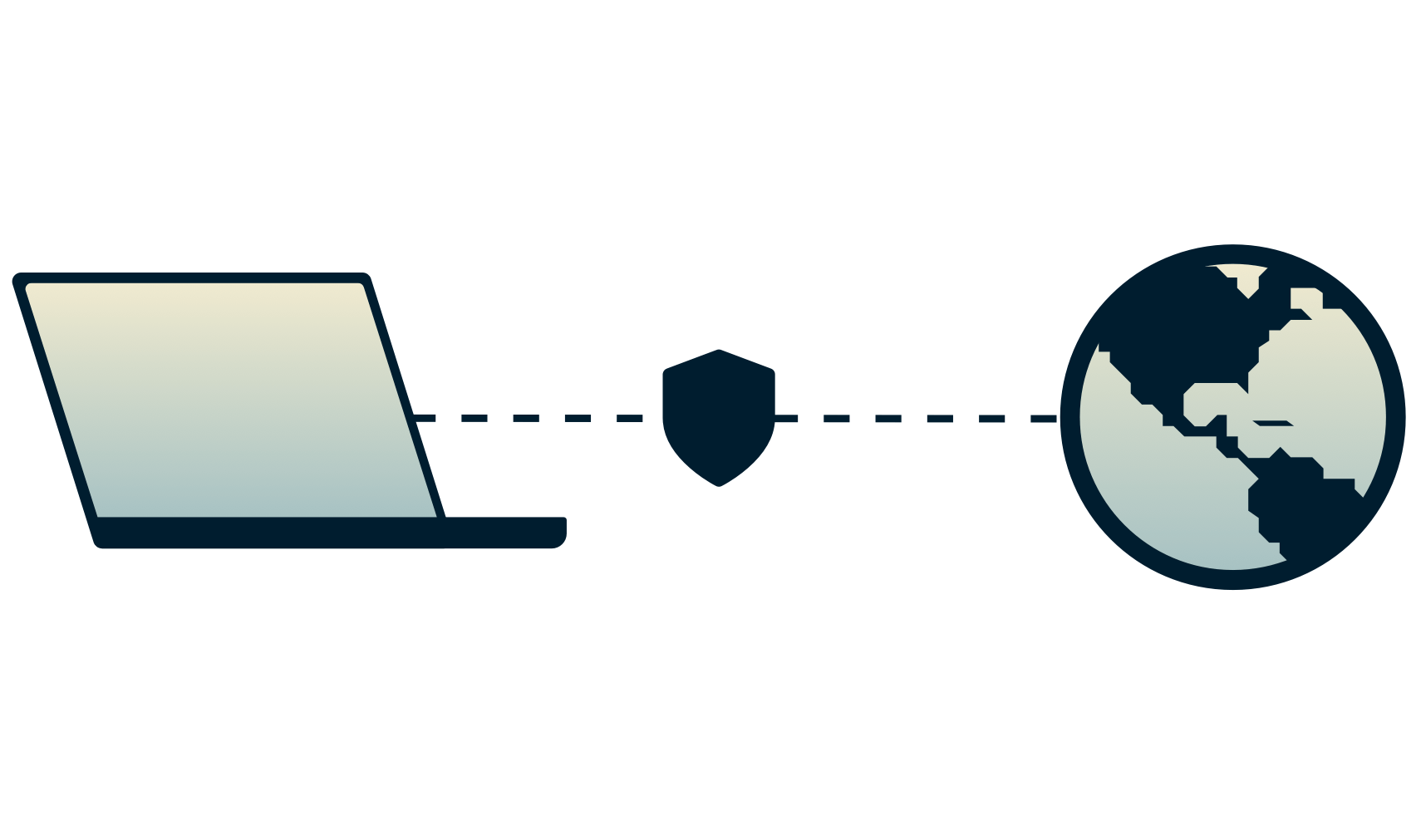VPN vs. remote desktop
In any environment with remote desktops, there are usually physical machines on a company’s premises that are accessed remotely. In an environment that uses VPNs, the physical machines are in the hands of the users but appear to the network as if they were on location.
In both cases, the connection between the network and its users needs to be encrypted.

What is remote desktop protocol (RDP)?
Remote desktop, also often referred to as screen sharing, is software that allows you to connect to another computer and use it as if you were sitting right in front of it. This can also be implemented as a native feature of your operating system. Popular tools include Netviewer, LogMeIn, TeamViewer, Citrix or Apple Screen Sharing.
Remote desktop applications are used for technical troubleshooting but also for remote working.

All keystrokes and mouse movements have to be sent to the remote desktop, which performs all computations. The screen is then sent back as an image. Because of this, the experience can be slow and frustrating on an even moderately fast internet connection, and the system becomes useless without an internet connection.
Remote desktops are sometimes even used by large and well-structured companies and offices where all employees work on-site. As the network inside of a building can be incredibly fast, the performance disadvantage of a remote desktop might become negligible, and the benefits of a centrally administered system prevail.

What is a VPN?
A VPN, or virtual private network, provides a secure tunnel between your device and the internet. VPNs help change your location, protect your privacy, increase your security, and unblock censored websites.
While your internet traffic still passes through your ISP, it can no longer be read, nor its final destination be determined. Websites you visit are no longer able to see your original IP address, only the IP address of the VPN server, which is shared by many other users and changes regularly.
The main differences between VPN and remote desktop
It’s important to distinguish between VPNs and remote desktops. While both provide their own benefits, their features and uses differ. VPNs secure your connections and let you access restricted content across the internet, whereas a remote desktop lets you access a computer.
Access
A VPN gives you secure access to all corners of the internet, including sites that are censored or otherwise restricted, whereas a remote desktop’s sole focus is allowing you to access a computer remotely, so that you can easily work from home or somewhere else.
Security
Both provide security, but for different purposes. A remote desktop protocol might provide a secure connection to protect your company, but your company will likely be able to monitor employee activity. Meanwhile, a VPN secures your connection to the internet with strong encryption.
Remote desktops also provide a vector for anybody on the internet to directly access machines inside the company’s network and use them as if they were sitting in front of them.
Productivity
The productivity benefit of using a VPN is it gives you access to popular services like Gmail or video conferencing that might be blocked in some countries.
But using a remote desktop environment lets you easily troubleshoot IT issues and work remotely.
Troubleshooting
If you run into any issues on your work devices, remote desktop enables the administrator to easily see everything that you see. The administrator can take control of your mouse and type on the keyboard without being physically present at your work station.
Working remotely
Remote desktop applications enable company employees to work productively on their devices when they’re on the road. It also means companies can hire globally rather than only in places where they have offices. Workers will have all the digital tools available as if they were in a physical office.
Should I choose VPN or RDP?
The decision of whether a computer network would be set up with remote desktops or a VPN should be made by the network administrator. A hybrid model is possible too. Usually when users are expected to bring their own hardware and administer their own computers, a VPN is favored.
One example of this would be in a university. When users do not administer their own computers or where the employer wants to have great control over what employees can or cannot do on computers, a remote desktop environment often makes more sense.

Frequently asked questions: VPN and remote desktop
Do you need a VPN for a remote desktop?
While you don’t need a VPN to access or use remote desktops, it is highly recommended that you secure connections between any of your devices and the networks they connect to.
How do I use VPN with a remote desktop?
To use VPN with a remote desktop, simply:
-
Sign up for ExpressVPN and its blazing-fast and ultra-secure service
-
Connect to a server in a location that’s closest to your remote desktop
-
Launch your remote desktop software and begin working!
What are the benefits of using VPNs for remote access?
Aside from giving you unrestricted access to tools and messaging services for your remote work, ExpressVPN also protects the data of both you and your company, while giving you the freedom of browsing and streaming online privately and securely without ISP throttling.
Learn more about using a VPN
-
![A laptop's secure connection to the internet.]()
-
![Laptop with encryption.]()
Encrypt your data
Strong encryption protects your data and communication
-
![A laptop with a speedometer]()
How fast is your VPN?
Find out what affects VPN speeds and how to find the fastest server for you



